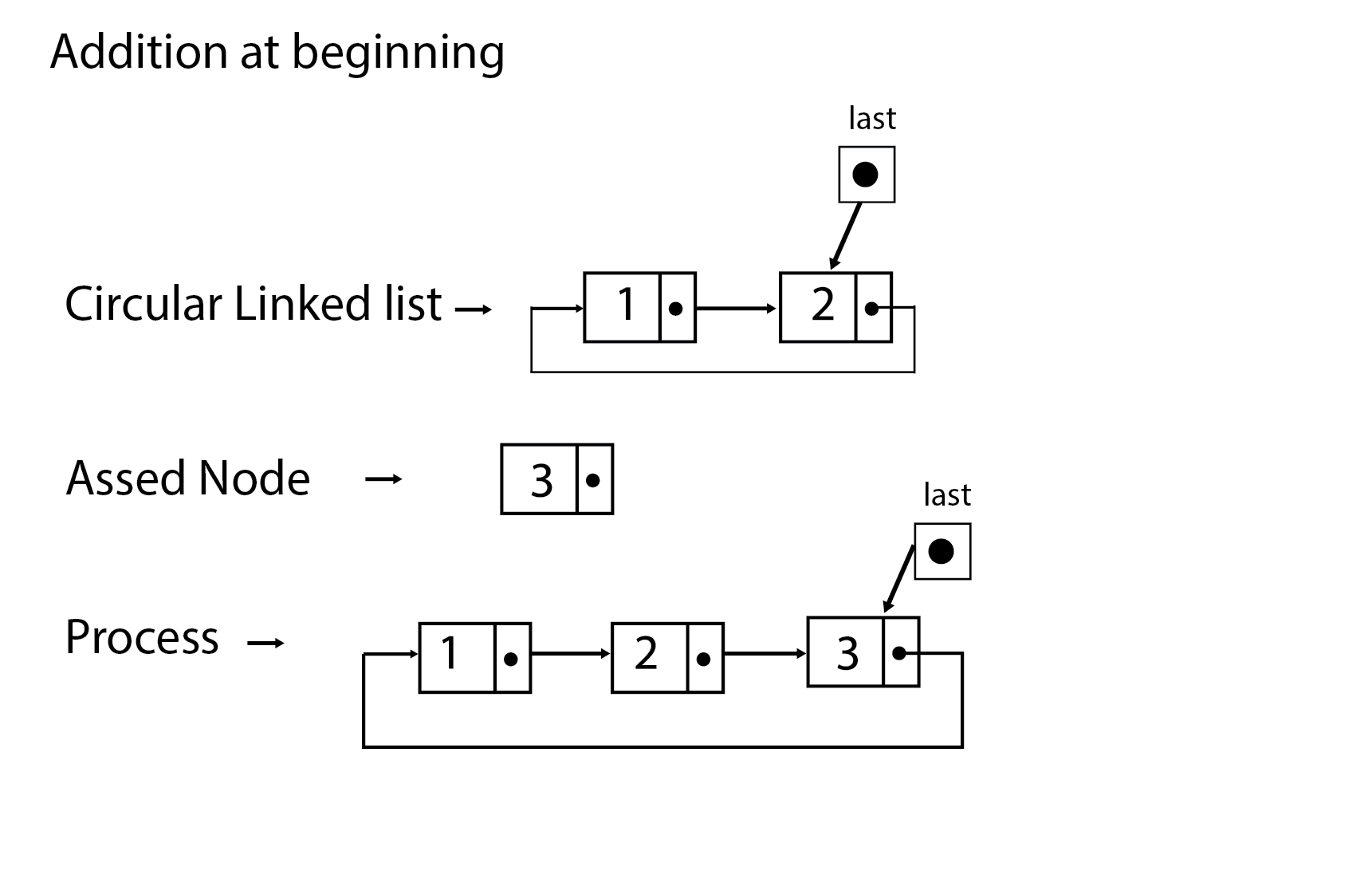
In Linear linked list the last Node simply holds NULL in it's next pointer. Implementing a circular linked list is very easy and almost similar to linear linked list implementation, with the only difference being that, in circular linked list the last Node will have it's next point to the Head of the List. In a Queue we have to keep two pointers, FRONT and REAR in memory all the time, where as in Circular Linked List, only one pointer is required. Circular Linked List can also be used to create Circular Queue.All the Players are kept in a Circular Linked List and the pointer keeps on moving forward as a player's chance ends. Another example can be Multiplayer games.The Operating System keeps on iterating over the linked list until all the applications are completed. All the running applications are kept in a circular linked list and the OS gives a fixed time slot to all for running. The real life application where the circular linked list is used is our Personal Computers, where multiple applications are running.

The circular linked list has a dynamic size which means the memory can be allocated when it is required. The elements points to each other in a circular way which forms a circular chain. In the circular linked list the previous element stores the address of the next element and the last element stores the address of the starting element. In the circular linked list we can insert elements anywhere in the list whereas in the array we cannot insert element anywhere in the list because it is in the contiguous memory. To do this in O(1) time complexity, simply make the newnode the second node of your CLL and swap the data of the head node and the new node.Circular Linked List is little more complicated linked data structure. Change the next pointer of our last node to point it to the new node.We make the next pointer of our newnode to point to the next of our last node.To achieve that, we iterate to the end of the CLL, and once we reach the last node we perform the following steps: We can insert at the beginning of CLL in O(1) and O(n) time complexity. Insertion at the beginning of a linked list: Insertion in a singly circular linked list:

The following diagram depicts the procedure. Suppose we have a singly linked list as followsĪt the end of this linked list, we add a new node with the name “node”, later we make that node point to the first node. To implement a circular linked list, we use a singly linked list and add a note at the end of the linked list which would point to the first node of the linked list. There are various operations that can be performed on a circular linked list.

The following image depicts the structure of a doubly circular linked list The following image depicts the structure of a singly circular linked list A circular linked list is same as normal linked list except for the facts that no node in a circular linked list points to NULL as the last node points back to the first node. That is why it is called a circular linked list. Pre-requisite: Singly Linked Lists What is a Circular Linked List?Īs the name suggest in a circular linked list, the last node of the linked list points to first node forming a circle. In this article, we will learn everything about Circular Linked List in C++


 0 kommentar(er)
0 kommentar(er)
